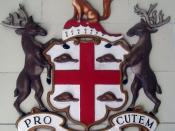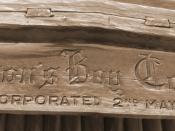THE EVOLUTION OF RETAILING IN CANADA
Canada was once roamed by about 220 000 Natives before the arrival of Europeans. Most of them lived in what is now called British Columbia and Ontario. Northern and Southern nations traded in the form of ceremonies, gift giving, feasting and speech making. Soon, the European explorers arrived, bringing with them new products such as copper kettles, metal knifes, guns, axes, etc. They traded with the natives using the barter system. Barter system is trading of goods and/ or services. Natives traded furs, canoes, snowshoes, tobacco, and moccasins in return.
After 1600, British and French crossed the Atlantic Ocean in large number. The Hudson's Bay Company was then set up by the British. It was the first fixed-location stores and first corporate chain stores in Canada. The trading posts were operated as a means to take the fur pelts and make fur garments for sale in Europe.
Profits from trading often goes back to home country, this is known as mercantilism.
Settlers barter any goods or services they cannot do themselves. As settlements grew, retail outlets clustered around the docks. Europeans continued trading with Native people. But Natives' system of trading often clashes with those of Europeans.
Britain and France raced each other to set up trading monopolies in North America. Canada was slowing developing westward by the 1770s, and mercantilism was resisted by the settlers. A group of independent French traders then began to trade furs making profit for themselves. They are called coureurs de bois, they travel everywhere, traded everything from furs to stoves, and they were the first people who traded currencies for furs!
Therefore retailing gradually developed between the late 1760s and the 1860s. By 1800, mercantilism was replaced by free trade by the French and British governments. Free trade...



EVolution of Canada
I thought it was an informative essay.
You forgot to CONCLUDE your essay
keep up the good work though!!
1 out of 1 people found this comment useful.